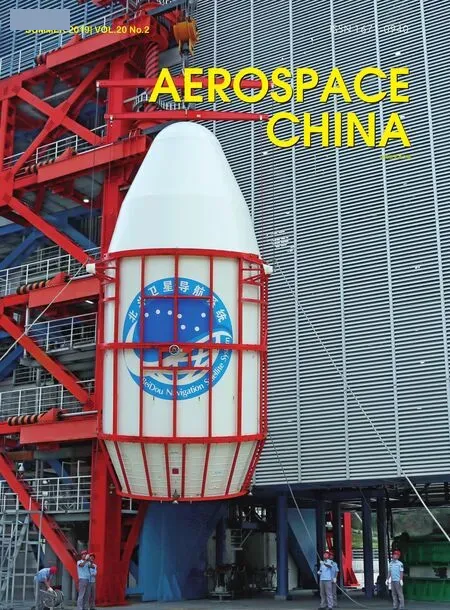LM-3C Conducts 200th Launch for CALT, Completing BeiDou 2 Satellite Navigation System
China launched the 45th satellite in the BeiDou Navigation Satellite System(BDS) as well as the BeiDou 2 GEO-8 satellite into orbit on a LM-3C carrier rocket from the Xichang Satellite Launch Center at 23:48 Beijing time on May 17, 2019.
The LM-3C carrier rocket was developed by the China Academy of Launch Vehicle Technology (CALT). This was the 101st mission of the LM-3 series launch vehicle, the 200th mission of the LM launch vehicle family that was developed by CALT and the 304th mission of the LM family.
It took 40 years for CALT's carrier rockets to perform 100 launches from 1970 with that LM-1 carrier rocket launching the DFH-1 satellite. The next 100 launches only took 8 years. Carrier rockets that were developed by CALT represented now by LM-3A have become a shining card for China with their high reliability and high performance.
The 45th BDS satellite developed by the China Academy of Space Technology (CAST) was the 4th backup satellite for the regional navigation system. It's a GEO satellite. Up to now, the BeiDou 2 satellite navigation system has been successfully constructed.
With the first BeiDou 2 satellite launched on April 14, 2007, China came into the age of BeiDou 2. The 16th Bei-Dou 2 navigation satellite joined the advanced 15 satellites, realizing a network on October 25th, 2012 and started to provide services for the Asian-Pacific region from the end of 2012, signifying the construction of BeiDou regional satellite navigation system. Now, the BeiDou 2 navigation satellite system has been in stable operation for 7 years with higher and higher positioning accuracy.
At present, all the BeiDou 2 satellites are in stable operation. But some satellites have exceeded their design life already. This BeiDou 2 backup satellite will play an important role in supporting the BeiDou navigation services and stabilizing the process from regional to global for the BeiDou navigation satellite system construction. (REN Yueming/China Space News)

